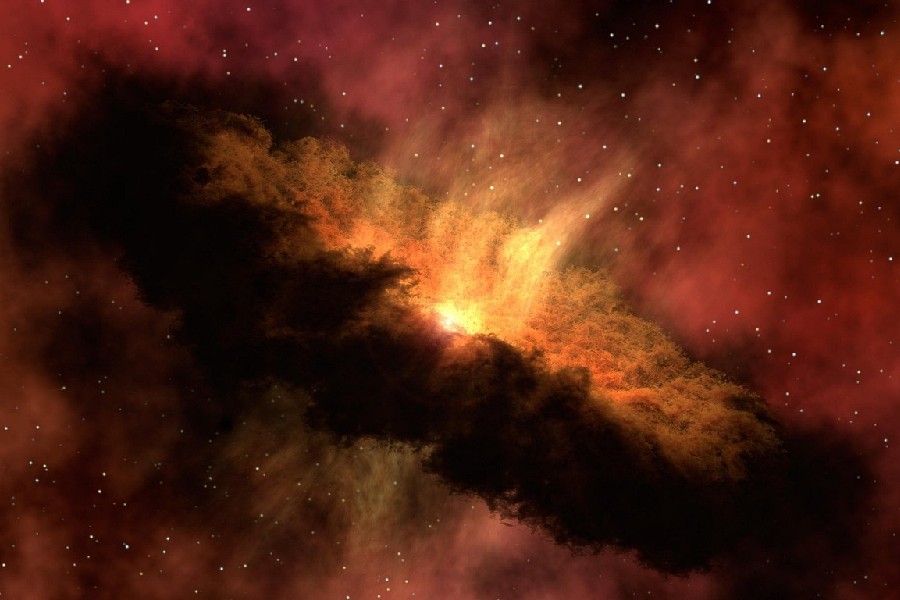Looking up at the night sky, one can see thousands of specks of light. These luminous dots are not stars but entire galaxies, leaving many to ask: How many galaxies are there in total across the observable universe?
Recent advances in telescope technology have allowed scientists to produce an estimated list of galaxies. The number of galaxies is stunningly massive, well into the trillions or more, based on extrapolations from current surveys.
So, without any further ado, let’s discover!

How Many Galaxies Are There?
While the exact number remains unknown, most astronomers estimate there are, at the very least, between 100-200 billion galaxies in the observable universe. Extrapolations based on deep field observations suggest the total number could be as high as 2 trillion or more, galaxies extending to the farthest reaches we can currently detect.
Advanced instruments, such as the Hubble Space Telescope, have allowed astronomers to delve into the depths of space and explore previously inaccessible temporal realms. Despite the vastness, the quantity of galaxies is constrained by the finite age of the universe since the Big Bang.
Significance of Understanding Galaxies in Astrophysics
Studying galaxies provides valuable insights into the early universe; after the Big Bang, galaxies formed from primordial hydrogen and helium gas clouds. Their formation and evolution rate over cosmic time informs early universe models. Also, galaxies offer a glimpse into the cosmic dark ages following the Big Bang.
The stellar populations within galaxies reveal the assembly of early large-scale structures. Scientists can gather crucial information by examining galaxies’ motions and distributions. This information is then used to measure dark matter and energy, mysterious components constituting most of the universe’s mass and energy.
Furthermore, the clustering and rotations of galaxies play a crucial role in constraining the amount of dark matter present, thereby shedding light on the nature of these unseen components. Mapping galaxies not only shows the large-scale structure of the cosmos but also unveils conditions present in the first fraction of a second after the Big Bang.
Also, analyzing the three-dimensional distribution of galaxies offers insight into the initial density fluctuations in the early universe. Comparing models helps test cosmological theories with observations, contributing to a deeper understanding of the cosmos.
Different Types of Galaxies
There are three main morphological types of galaxies: spirals, ellipticals and irregulars that each have distinct shapes and features. The different shapes of galaxies relate to the formation and evolutionary histories of each galaxy type. These shapes have developed over billions of years since initially emerging after the Big Bang.
Spirals galaxies
Spiral galaxies have a spherical central bulge of older stars surrounded by a much larger, flat, rotating disc containing dust and gas. Prominent spiral arms that give these systems their name extend from the central bulge and wind outwards in a beautiful spinning pattern.
The disc contains young stars often found clustered inside stellar nurseries that actively form new stars and clusters, illuminating these star-birthing regions. The differential rotation of the galaxy arms versus the core creates density waves that can trigger bursts of new star formation within the spirals.
Ellipticals galaxies
Elliptical galaxies have smooth, featureless distributions of stars that appear oval or football-shaped when viewed from the Earth. They contain mostly old low-mass stars with little dusty gas, indicating minimal current star formation within these galactic fossils.
Elliptical shapes likely result from mergers of smaller progenitor galaxies that collided and combined over billions of years of cosmic time. This makes ellipticals an important archeological relic for studying the hierarchical assembly history of galaxies across the observable universe.
Irregulars galaxies
Irregular galaxies exhibit no organizational structure or distinct form, often appearing asymmetric in their shape. These small systems are concentrations of stars and interstellar gas and dust that are still gravitationally coalescing into a galactic morphology.
Individually, irregular galaxies often have misshapen, asymmetric forms, unlike classic spirals and ellipticals. However, they contribute uniquely to the diversity of cosmic structures.
They also showcase evolutionary pathways on display across the observable universe. They provide glimpses into leftover pockets of materials still actively churning out new generations of stars.

What Is the Estimated Number of Galaxies in the Universe?
The observable universe contains billions of galaxies. It is estimated over 100 billion galaxies exist just within view.
As telescope technology advances, revealing more each year, the observable horizon expands. Beyond that, countless galaxies remain unseen. The number of galaxies continues to be revised upwards, with current estimates serving as lower bounds on the true totals reaching the edge of the universe.
Implications of this vastness on our understanding of the cosmos
The immense scale sparks shifts in perspective. What once seemed vast now grows even larger. The Milky Way, once our sole representation of all, now becomes a mere speck in the vast sea.
Reduced to grains of sand, a billion galaxies would fill entire landscapes. Worlds and possibilities multiply exponentially, and new questions arise about origins.
Despite the bounded nature of exploration due to vast distances, imagination knows no bounds. It stares into the abyss of galaxies surrounding ours in an eternally expanding space.
The Observable Universe
The observable universe refers to the portion of the cosmos visible from the Earth due to the finite speed of light. It is estimated to be about 93 billion light-years in diameter and encompasses galaxies, stars, and cosmic structures.
However, our view is restricted by cosmic horizons. Beyond the observable universe lie regions whose light hasn’t reached us since the Big Bang, presenting an unreachable cosmic frontier.
Additionally, dark matter and energy, constituting about 95% of the universe, remain elusive and defy direct observation. These limitations underscore the incomplete nature of our cosmic comprehension, as vast expanses and fundamental forces elude our direct perception, leaving much of the universe shrouded in mystery.
How Far Away Are the Galaxies?
Intergalactic distances cover vast spans, ranging from millions to billions of light years. The neighboring Andromeda galaxy, for instance, is positioned 2.5 million light years away. Extending even further, the observable universe boasts a 46 billion-light-year radius.
Beyond the visible horizon exist stretches of the unknown before reaching an edge. Should one attempt to traverse the observable sphere, the journey would take eons, given the constraints of traveling at light speed.
Moreover, the human mind grapples with the comprehension of galaxy separations. Analogies, while attempting to convey the enormity, prove futile. Imagine shrinking galaxies to the size of coins; 100 billion of them would cover America. Despite this vastness, humanity resides within the confines of the same relative speck.
Light Years and the Speed of Light
Distances are defined by light years, representing the distance light travels in one year at a speed of 186,000 miles (300,000 kilometers) per second. Proxima Centauri, the closest star, is situated more than 4 light years away. These scales unveil the vastness of the cosmos.
Calculating distance from travel time becomes possible due to the finite speed of light. Hubble employed this principle to calculate Andromeda’s distance, observing photons that had taken millions of light years to reach us. The constant speed of light serves as a precise cosmic ruler, facilitating the tracking of cosmic expansion.
Exploring Galaxies From Earth
A simple glance at the night sky exposes stars and occasional galaxies, such as Andromeda, along with cosmic wonders. Also, advanced amateur telescopes go further, revealing nebulae and star clusters.
Moreover, professional ground-based telescopes, belonging to a higher class, can now capture fine details and images of galaxies. Currently, there are new giant segmented mirror reflector networks in development. These networks significantly enhance light-gathering power through interferometry and virtual optics.
Conclusion
How many galaxies are there? We have realized that enumerating all galaxies proves an endless task. But estimates now place the count upwards of 100 billion in our observable sphere alone.
We hope realizing the staggering scale of possible worlds represents sparks of awe at the vastness before us. However, it prompts profound questions about humanity’s position in a vast and ancient universe filled with galactic diversity throughout time.
So, whether the number of galaxies is ultimately finite or infinite, what stands out is that in the known expanse, our small corner remains largely unaffected by others. This endurance is attributed to a rare, hospitable planet in a humble galaxy, drifting among countless others beyond our true understanding or grasp.
